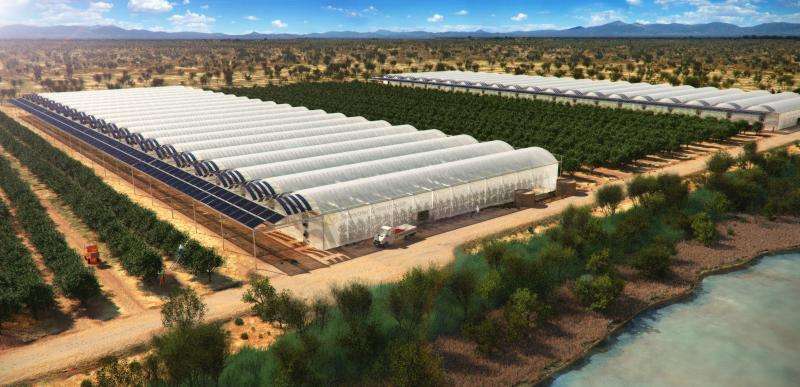Seawater greenhouses to bring life to the desert

Greenhouses that will use seawater to grow crops in one of the hottest and driest places on earth will be designed by researchers at Aston University working with industry partners as part of an international project.
The installations are to be erected in specially selected sites across the Horn of Africa, a region where temperatures regularly breach 40°C, water is scarce and food insecurity is very high. Due to the climate, conventional agriculture has been severely marginalised and the situation is worsening.
The project aims to overcome the region's inhospitable conditions to help farmers drastically increase their crop yields, providing them with a consistent, sustainable income. Currently in Somalia, only 1.5% of the country's land is cultivated and average annual crop yields per hectare are just 0.5 tons – compared to 700 tons per hectare in commercial greenhouses.
The productivity and quality of crops cultivated in greenhouses is typically much improved upon traditional open field cultivation and the use of water and nutrients is much more economical. Once installed, the innovative greenhouses will pump seawater from the sea using solar energy and convert it into freshwater for irrigation via the desalination process. The remaining seawater will be brought into contact with the air inside the low-cost net structures of the greenhouses, creating a cool and humid breeze to reduce plant transpiration. Salt extracted from the seawater will be utilised in cooking and preserving food.
A team from Aston, led by Dr Philip Davies and Dr Sotos Generalis, will provide their expertise in areas relating to seawater cooling, desalination of saline water and airflow dynamics, helping to design the structure and the layout of the greenhouses. They will collaborate on the project with fellow academics at Gollis University, in Somaliland, and the firm, Seawater Greenhouses Ltd that is leading the whole project.
Dr Philip Davies, of the School of Engineering and Applied Science, said: "I think the project could really make a difference to peoples' futures in the Horn of Africa, which is very much in need of investments to provide for its growing population. We will be working very closely with our partners in Somaliland to increase our understanding of the local challenges and to make sure our contributions are effective."
By 2050, global agricultural output will need to increase by 60% on current levels to meet demand for food. Agricultural output on such a scale will put an increased strain on resources such as water – with lack of fresh water already being an acute problem. The use of desalination and seawater greenhouses is expected to rise quickly to meet growing demand.
Provided by Aston University





















